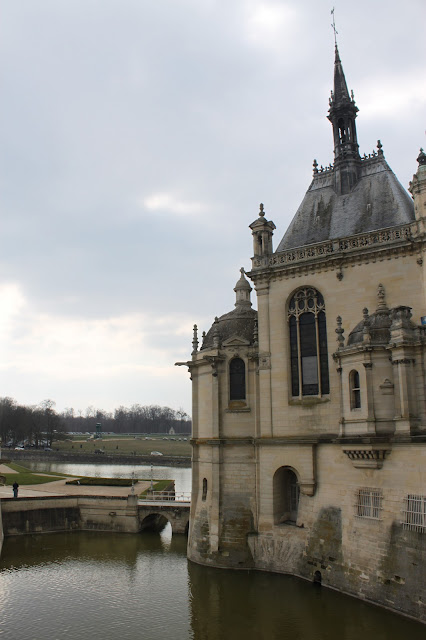Design Traveler Visits: Le Domaine de Chantilly, France
When thinking of Paris and châteaux, Versailles, Fontainebleau and perhaps the Loire Valley come to mind. But just a short distance from central Paris lies a gem of a château that has been carefully restored and offers some serious eye candy of paintings, decorative arts, gardens and equestrian displays.
The Domaine de Chantilly passed from different parts of the same family without ever being sold, from 1386 to 1897. The Château first opened to the public in 1898, less than a year after the death of the final owner, Henri d’Orleans, Duke of Aumale. As with the Louvre, the Château de Chantilly was improved, expanded, destroyed and rebuilt over the course of centuries. Its long history is complex, fascinating and, well…very French...
Chantilly was at its peak in the 17th century, when André Le Nôtre (who would be later become the head gardener at Versailles) created a Grand Canal, water features and parterres. Chantilly came alive with grand balls and fireworks displays, visits from Louis XV and plays by Molière.
The fun came to a halt during the French Revolution, when the collections of the Château were seized and carted off to the Louvre and the Château served first as a prison, then was partially demolished. The Château regained its glory in the 19th century when Henri d'Orléans, the fifth son of King Louis-Philippe, inherited the property (and great wealth) in 1830 at the age of eight.
Today, a visit to the Domaine includes the Renaissance-style Château, with grand entry hall and hunt theme, intimate chapel, a generous painting gallery, library with over 1,300 manuscripts and 12,500 books, private apartments and gardens. The collections are presented today just as they were in the 19th century as Henri d’Orleans had arranged them. The collection can be considered a mini-Louvre, with representation by many great French and Italian masters such as Raphael, Corot, Watteau, Poussin, Delacroix and Clouet.
The private apartments have been undergoing extensive renovation since 2005, and the details behind that work are interesting from a design standpoint. The largest expense of restoration work on the Château is gold leaf. Pure, 24 karat gold leaf is used, not paint, and there is a lot of it. The walls and relief are cleaned, to uncover the original colors, and not completely repainted. The paint is made especially for the Domaine with a base of what is called colle de peau, or animal glue, which holds well for centuries and has been used since ancient times.
The Domaine de Chantilly is a marvelous and carefully restored château with its collection of period decorative arts, paintings, book & manuscripts. In addition to being beautiful, it is also fascinating in that it is the personal collection of one man, Henri d’Orleans. If you have visited the Louvre or Versailles, you will love this Château, for the intimate portrait it paints of the tastes and life of one of France’s royal sons after the monarchy. In the spring and summer, the Domaine also presents a series of live horse shows and dressage demonstrations in the Grand Stables.
For more information on the Château de Chantilly, visit www.chateaudechantilly.com
* * * * *
Andrea Drexelius is a devoted Francophile and divides her time between Laguna Beach and various destinations in France. In addition to importing classic French market baskets, she writes extensively on France. The first of her e-book series Rêve will focus on Paris (including Chantilly) and will be published imminently. Information on Rêve and her blog can be found HERE. 

















0 comments:
Post a Comment